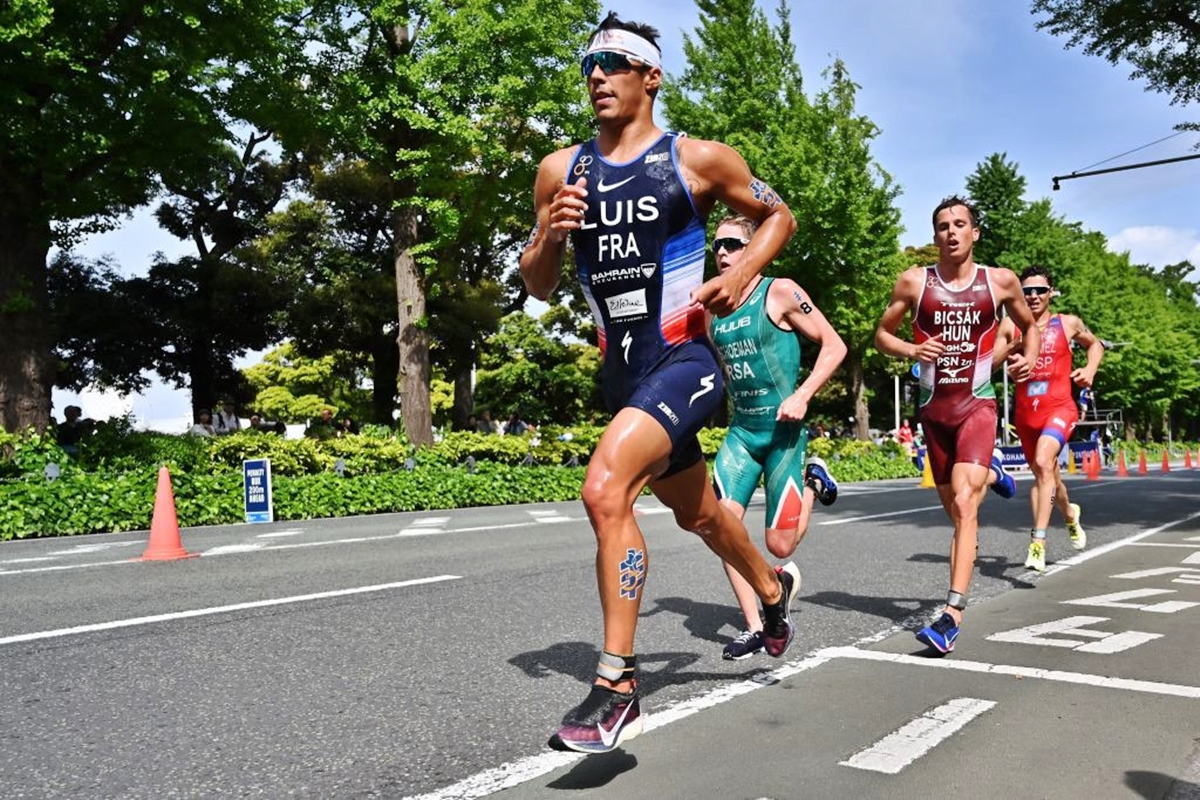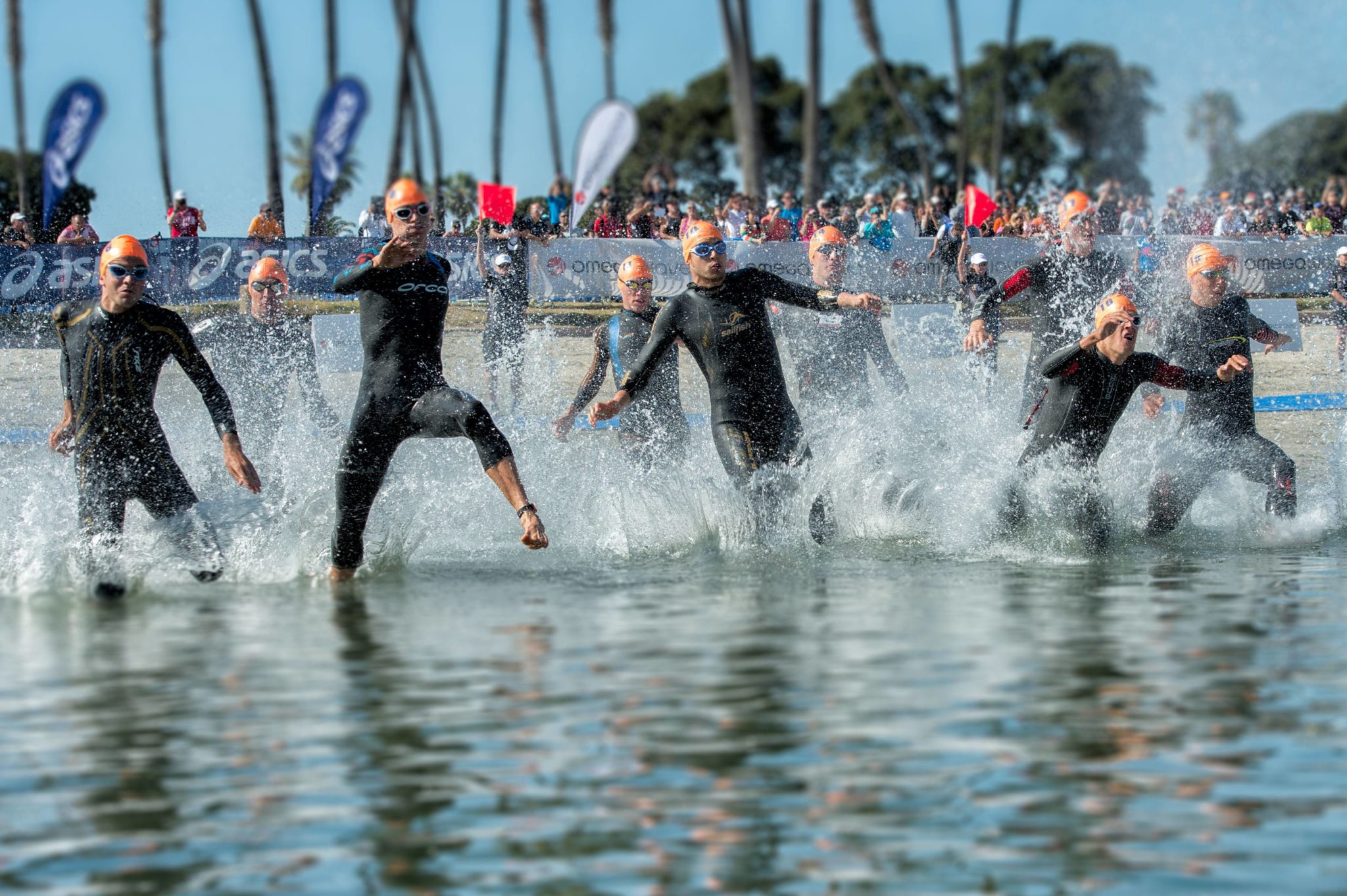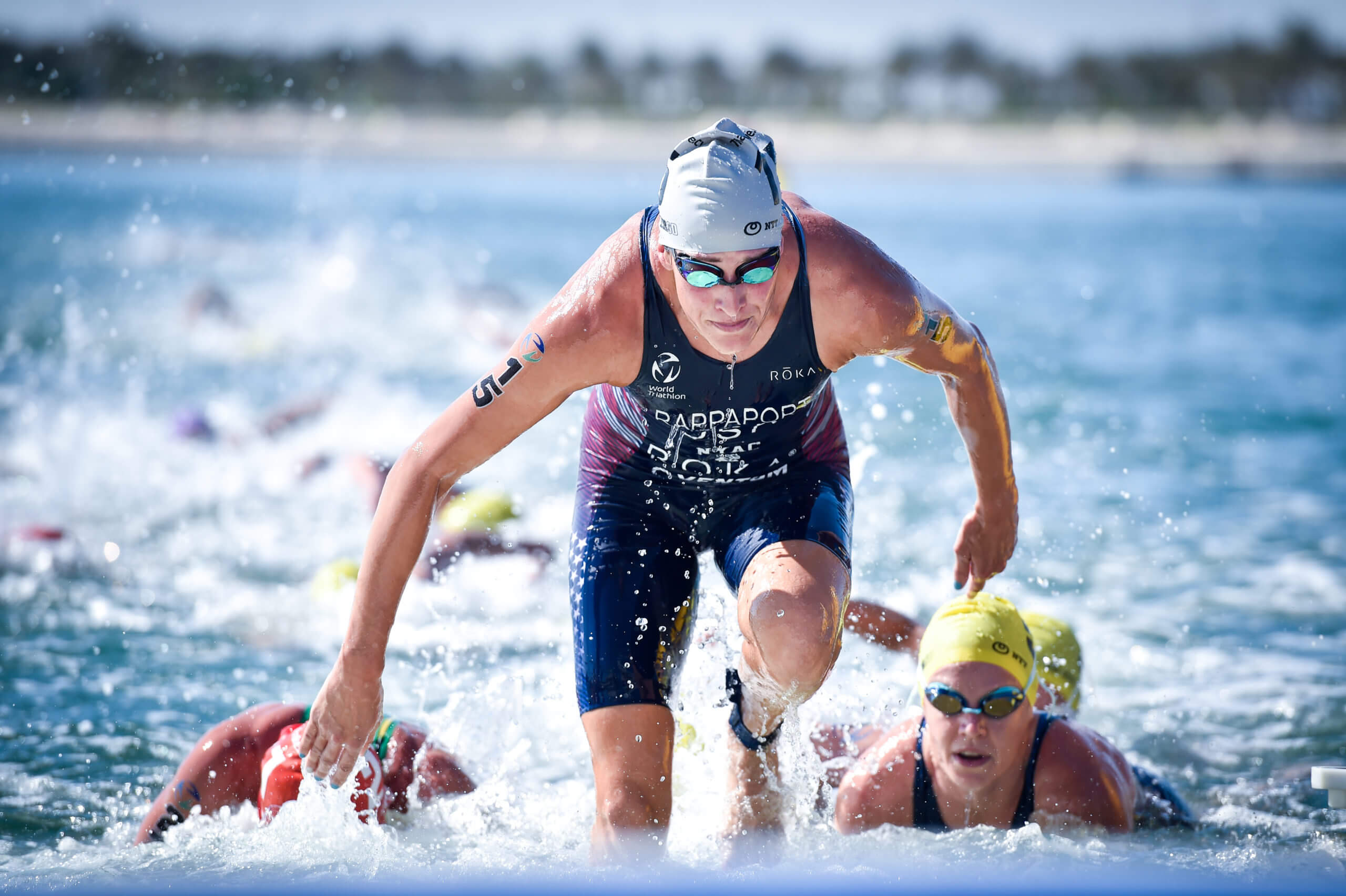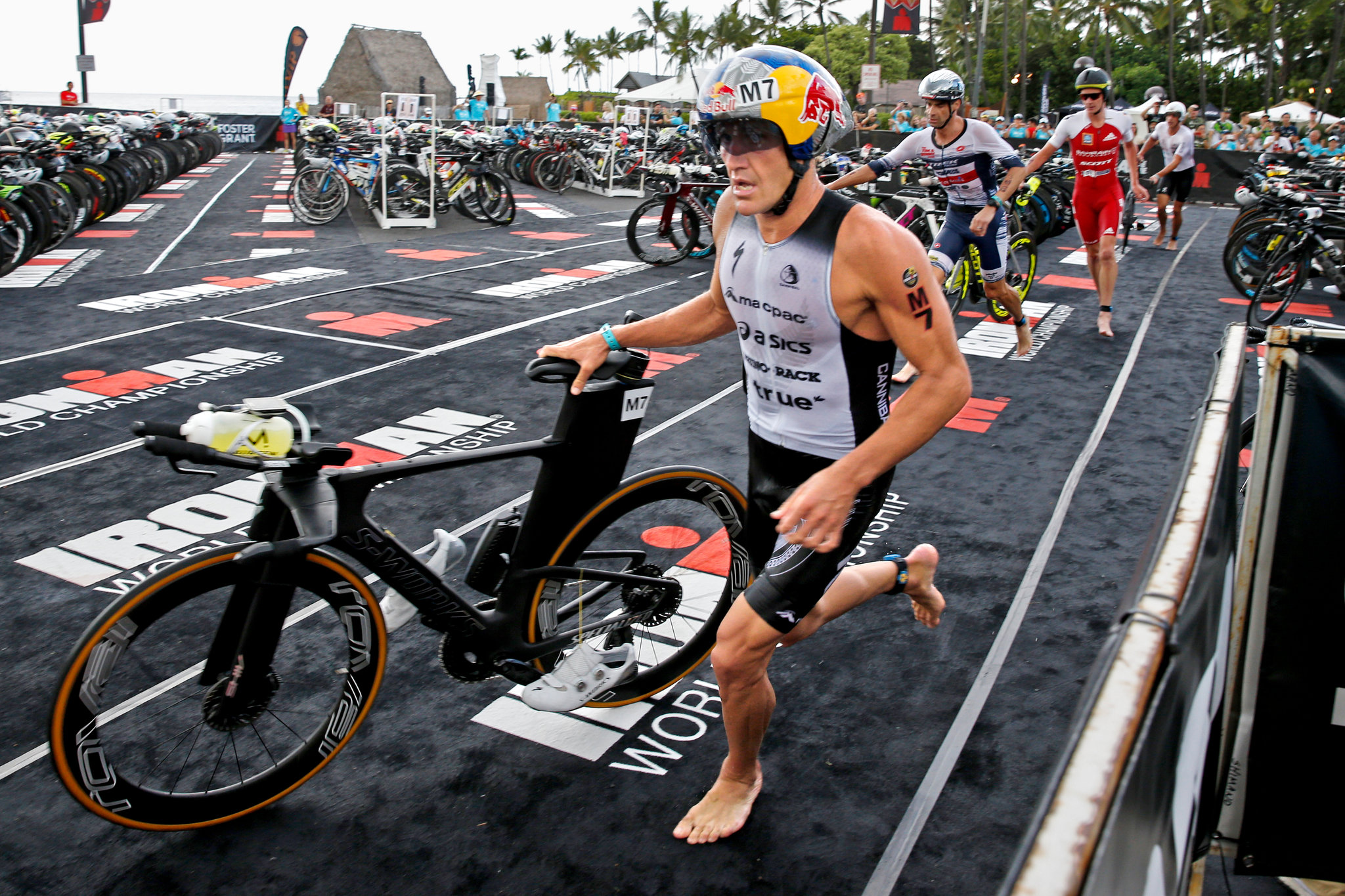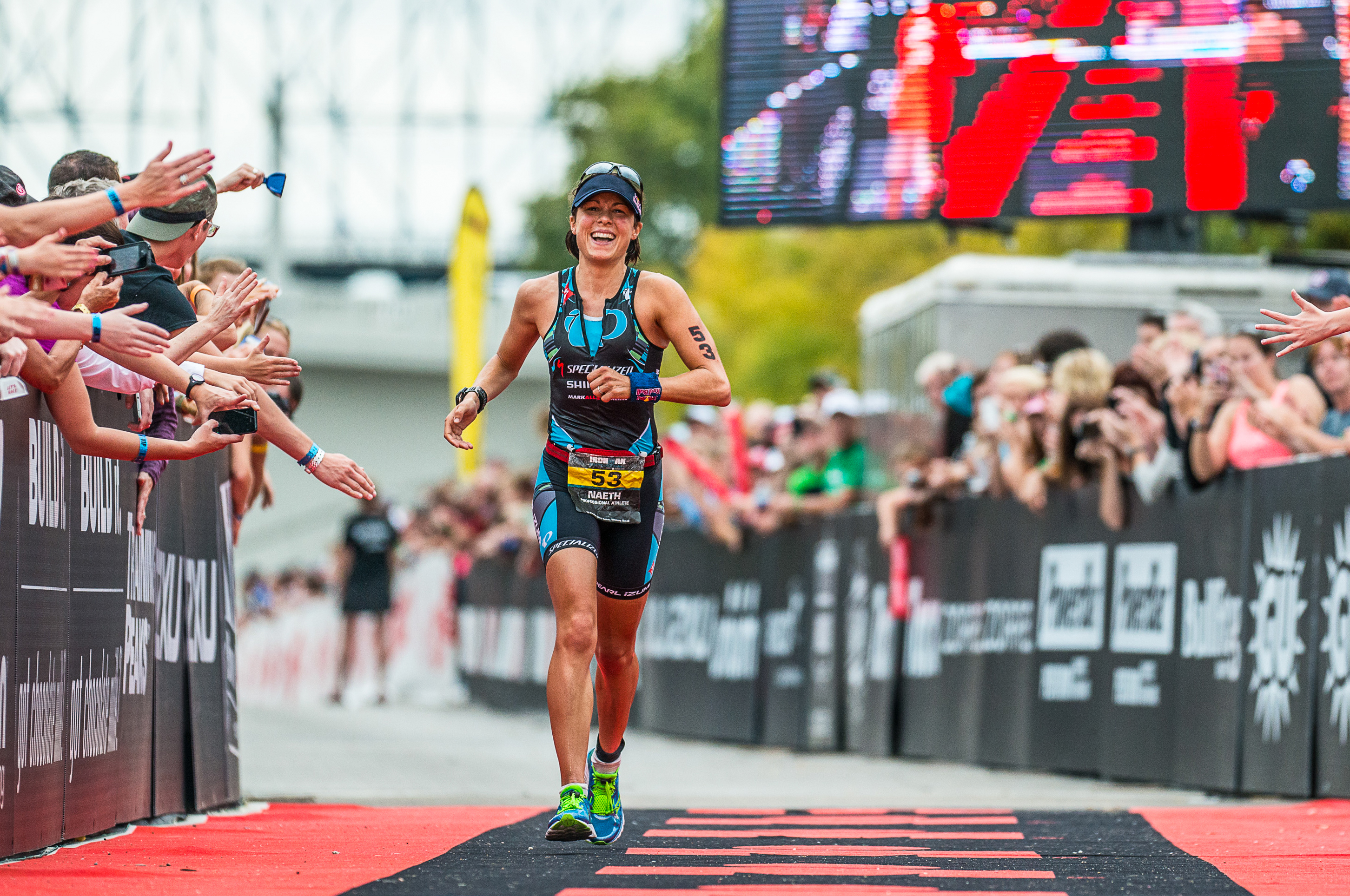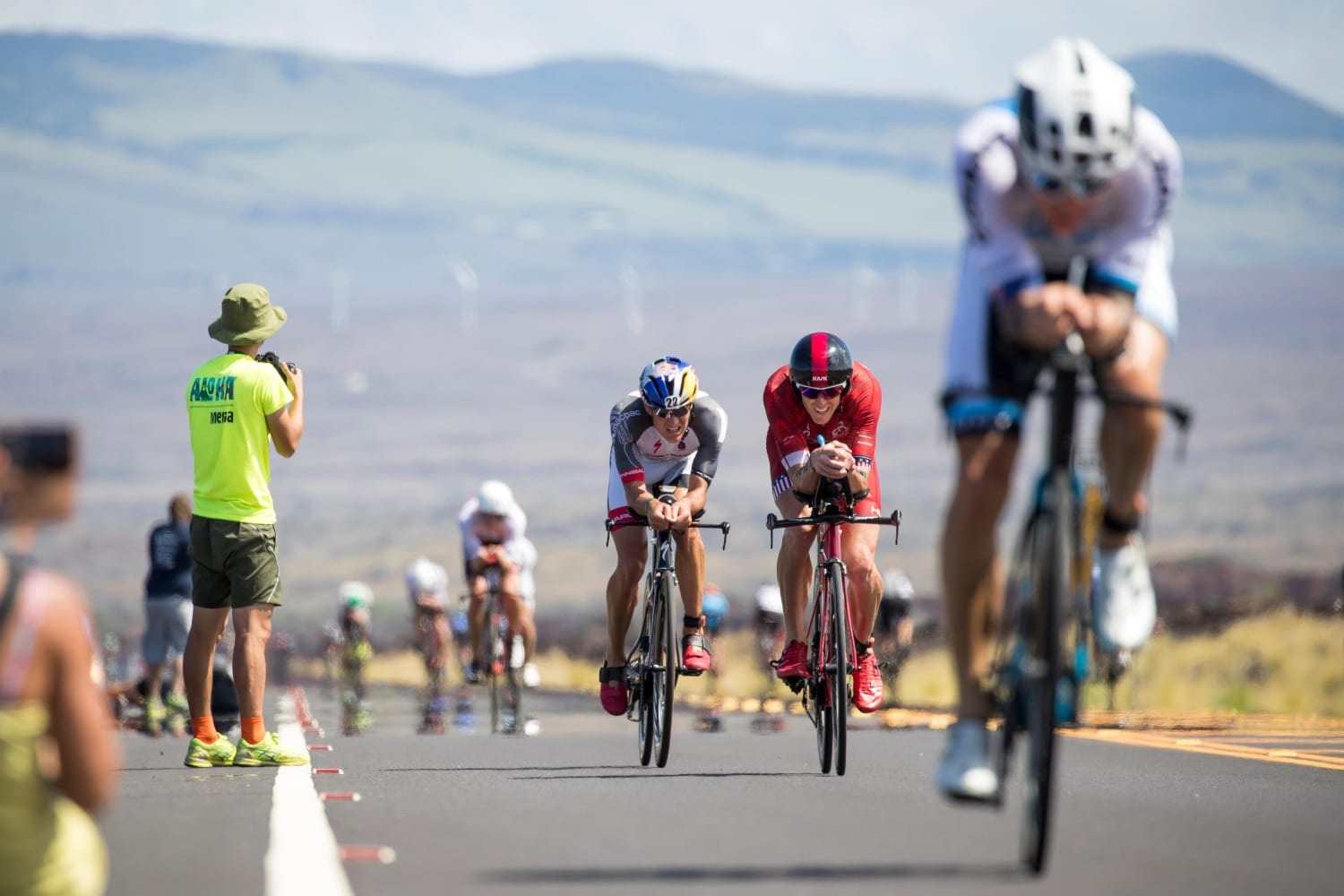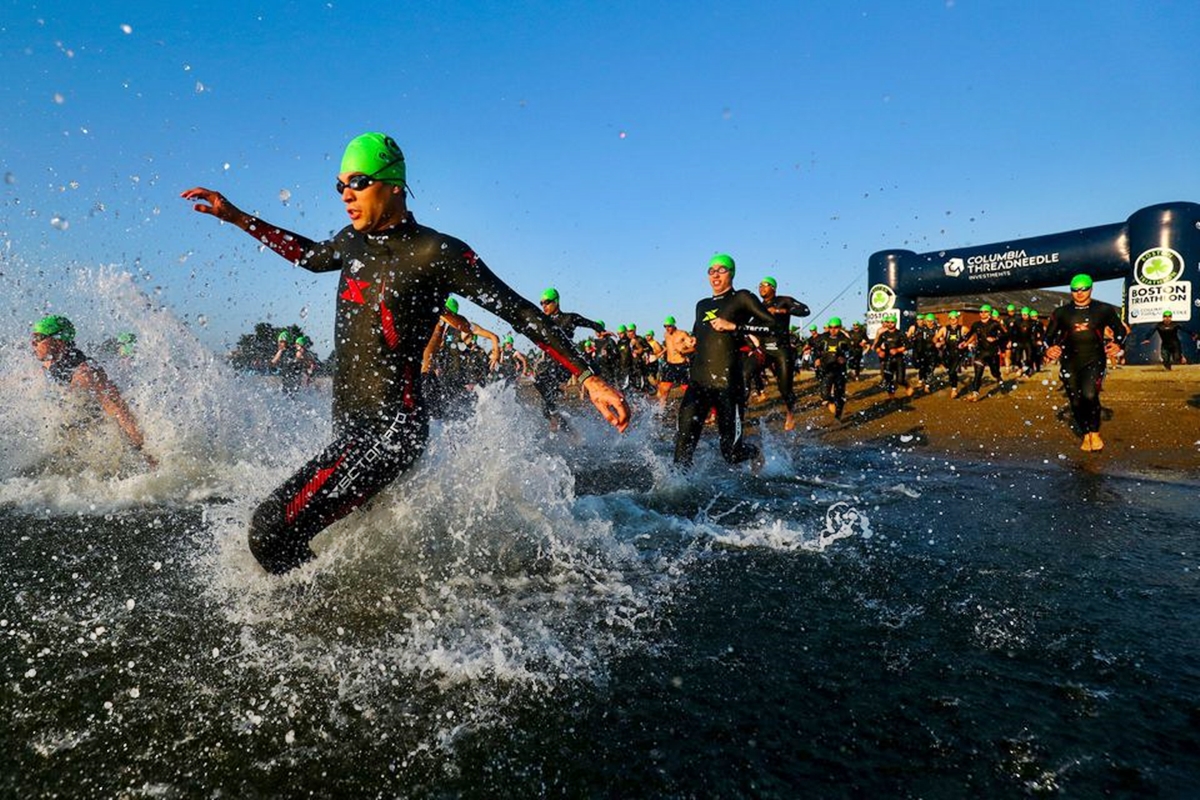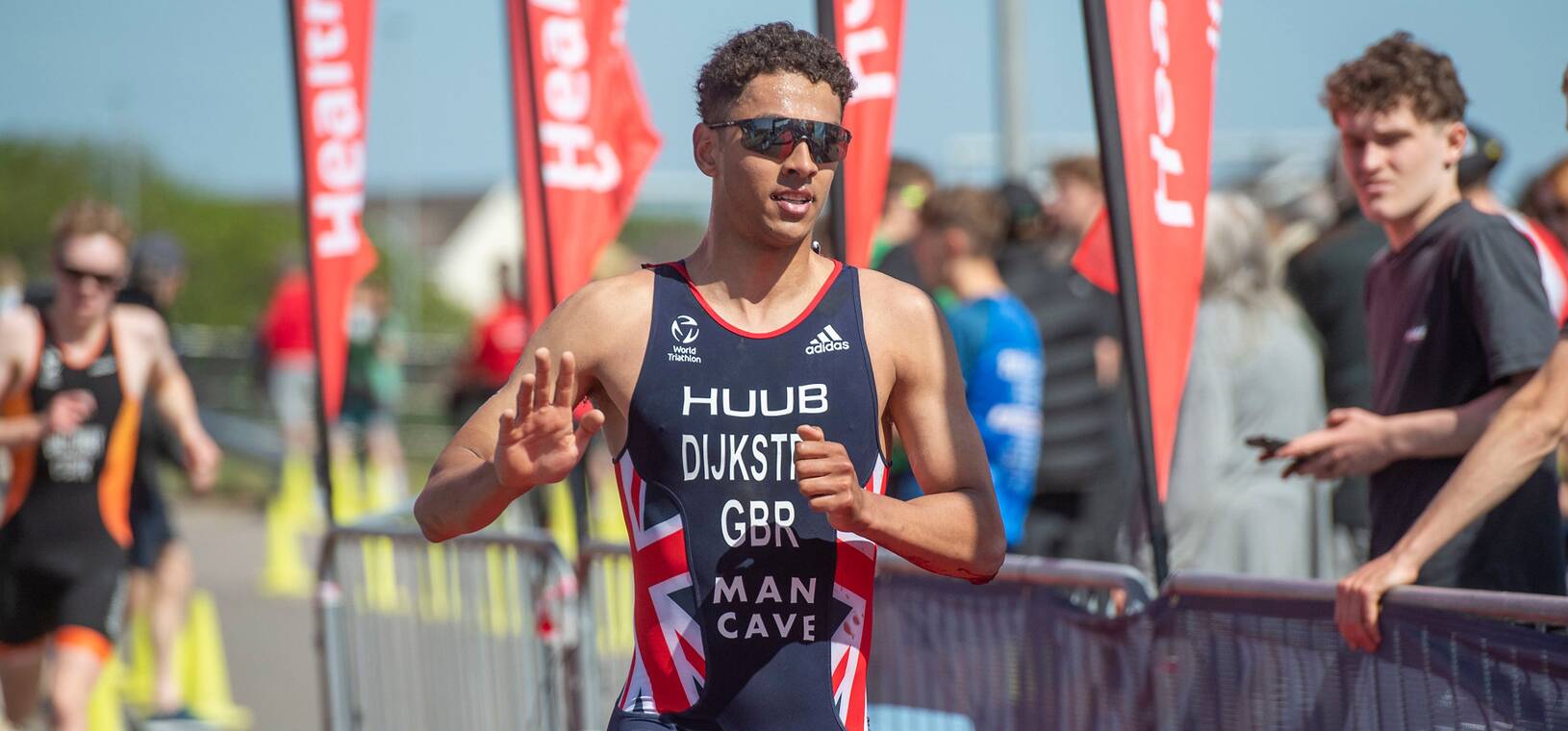

Featured
What Are The Events In A Triathlon
Modified: January 2, 2024
Discover the exciting events in a triathlon and get inspired to participate in this featured athletic competition, including swimming, cycling, and running.
Introduction
A triathlon is a multisport endurance event that includes three different disciplines: swimming, cycling, and running. It is a true test of physical fitness, mental stamina, and strategic planning. Triathlons have gained popularity globally, attracting individuals from various age groups and fitness levels.
Participating in a triathlon is not only a great way to challenge yourself physically and mentally, but it also provides an opportunity to engage in a competitive and supportive community. Each event within a triathlon presents unique challenges and requires specialized training and equipment.
Whether you’re a seasoned athlete or a beginner looking to embark on your first triathlon journey, it is essential to understand the structure and components of the event. This article will provide you with a detailed overview of the different events that make up a triathlon.
By familiarizing yourself with the swim, bike, and run events, as well as other crucial aspects like transition areas and required equipment, you’ll be better prepared to tackle the challenges and enjoy the experience to the fullest.
Definition of a Triathlon
A triathlon is a multi-disciplinary endurance event that combines three distinct sports: swimming, cycling, and running. It is a true test of physical fitness, mental strength, and overall athleticism. The word “triathlon” is derived from the Greek words “tri” meaning three and “athlon” meaning contest or competition.
In a standard triathlon, participants begin with the swim event, followed by the bike event, and finally, the run event. The overall time taken to complete all three events is recorded, and the participant with the fastest total time is declared the winner. Triathlons can range in distance, from sprint triathlons which are shorter distances meant for beginners, to Olympic distances, half-Ironman distances, and even full Ironman distances that push the limits of human endurance.
One unique aspect of triathlons is the transition area, where participants switch from one discipline to another. These transition areas are equipped with stations for participants to change their gear, such as removing wetsuits after the swim and mounting their bikes for the cycling leg. Transition times are included in the overall race time and can be a crucial factor in determining the final outcome.
Triathlon races can be conducted in a variety of settings, including open water bodies like lakes, oceans, or rivers for the swim leg; roads, trails, or tracks for the cycling leg; and designated running routes or trail courses for the run leg. Courses may be marked with buoys, signage, or volunteers to guide participants along the designated route.
Triathlons have become increasingly popular over the years, attracting participants of all ages and backgrounds. They provide a platform for individuals to push their limits, set and achieve personal goals, and experience the exhilaration of crossing the finish line. Triathlon events also foster a sense of community and camaraderie among participants, as they train together, support one another, and share in the common pursuit of athletic excellence.
Swim Event
The swim event marks the beginning of a triathlon and typically takes place in an open water body, such as a lake, ocean, or river. It is important to note that not all triathlons have an open water swim; some may be held in pools. The swim distance varies depending on the type of triathlon, with sprint triathlons typically featuring a 750-meter swim and longer distance events ranging from 1.5 to 3.8 kilometers.
Swimming in open water presents its own set of challenges compared to swimming in a controlled environment like a pool. Participants often encounter factors such as waves, currents, and limited visibility. It is essential to prepare for these conditions by practicing open water swims and familiarizing yourself with the racecourse beforehand.
During the swim event, participants start in waves, with each wave typically consisting of athletes of similar age groups or divisions. This helps to reduce congestion and ensure a smoother and safer start. The most common stroke used in triathlon swims is the front crawl (also known as freestyle), as it is the fastest and most efficient stroke.
Wearing a wetsuit is allowed and often encouraged for open water swims, as it provides buoyancy, insulation, and reduces drag. Some triathlons may have specific rules regarding wetsuit usage, such as temperature thresholds. It is advisable to check the event rules and regulations before deciding whether to wear a wetsuit.
Swim courses are typically marked by buoys or floating markers to guide participants along the designated route. It is crucial to follow these markers and swim in a straight line to avoid adding unnecessary distance to your swim. Orienting yourself during the swim by lifting your head and looking for landmarks can help maintain a straight course.
In the swim-to-bike transition, also known as T1, participants exit the water and make their way to the transition area. Here, they remove their wetsuits (if worn), put on their cycling gear, and prepare for the next leg of the race. Efficient transitions are key to saving valuable time and maintaining momentum throughout the triathlon.
Preparing for the swim event involves regular pool training sessions to improve endurance, technique, and speed. Additionally, incorporating open water swim practices, such as sighting (lifting your head above water to navigate), swimming in a group, and dealing with various water conditions, will help you feel more confident and comfortable on race day.
Remember, the swim event sets the tone for the rest of the triathlon, so proper training, preparation, and technique are crucial to a successful race.
Bike Event
The bike event is the second leg of a triathlon and follows the swim. It involves cycling a specified distance on a road or trail course, depending on the race’s terrain. The distance for the bike leg can vary, with sprint triathlons typically featuring a 20-kilometer bike ride, while longer distance events can range from 40 to 180 kilometers.
Participants transition from the swim to the bike event in an area known as T1, where they retrieve their bikes and put on their cycling gear. It is important to be efficient during the transition, as it contributes to overall race time.
When cycling in a triathlon, there are certain rules and guidelines that participants must adhere to. These rules ensure safety and fair play for all participants. Drafting, which refers to riding closely behind another cyclist to reduce wind resistance, is often not allowed in most triathlon events. Therefore, maintaining a safe distance from other participants is essential.
The type of bike used in a triathlon depends on personal preference and the distance of the race. Road bikes with dropped handlebars are the most common choice, as they offer speed and maneuverability. However, some participants opt for triathlon or time trial bikes, known for their aerodynamic design. Whichever bike you choose, ensure it is in good working condition and properly fitted for comfort and efficiency.
During the bike leg, participants must follow the designated course, which is marked with signs, arrows, and volunteers for guidance. It is essential to pay attention to traffic laws and signals, as some portions of the bike course may take place on public roads. Safety should always be a top priority.
Proper nutrition and hydration are crucial during the bike leg to sustain energy levels. Many triathlons have aid stations along the course where participants can grab water, sports drinks, and snacks. It is a good practice to carry your own nutrition, such as energy gels or bars, to ensure you have access to fuel when needed.
Efficient pedaling technique, maintaining a consistent cadence, and pacing yourself are key during the bike leg. It is important to strike a balance between pushing your limits and saving energy for the final run. Familiarize yourself with different cycling workouts, such as interval training and hill climbing, to build strength and endurance specifically for the bike leg of a triathlon.
After completing the bike leg, participants enter the second transition area, T2, where they secure their bikes and change into their running gear. Efficient transitions are crucial to maintain momentum and minimize time spent in the transition area.
The bike leg of a triathlon offers an opportunity to showcase your cycling skills and endurance. With proper training, preparation, and adherence to race rules, you can conquer the bike course and transition smoothly into the final leg of the triathlon.
Run Event
The run event is the final leg of a triathlon, following the swim and bike events. It is a test of endurance and mental fortitude as participants push their limits to complete the designated run course. The distance for the run leg can vary depending on the type of triathlon, ranging from 5 kilometers in a sprint triathlon to a full marathon distance in an Ironman event.
After completing the bike leg, participants transition from the bike to the run in an area known as T2. Here, they secure their bikes, change into their running gear, and prepare for the final leg of the race. Maintaining a smooth and efficient transition is important to save time and maintain momentum.
During the run leg, participants must follow the designated course, which is marked with signs, arrows, and volunteers for guidance. The run course can take place on various terrains, including roads, trails, or a mix of both. It is important to familiarize yourself with the course beforehand to mentally prepare for any challenging sections or elevation changes.
Proper pacing is crucial during the run event, especially after completing the swim and bike legs. It is important to find a comfortable running pace that allows you to maintain consistent energy and avoid burnout. Running too fast at the beginning can lead to fatigue later on, so it is important to conserve energy and gradually increase your pace if necessary.
Staying hydrated and fueling properly during the run leg is essential to maintain energy levels. Aid stations are typically available along the run course, where participants can grab water, sports drinks, and sometimes snacks. It is a good practice to carry your own hydration or energy gels to ensure you have access to fuel when needed.
Mental strength plays a significant role in the run leg of a triathlon. Training your mind to stay focused, positive, and motivated can help you push through physical fatigue and mental obstacles. Setting smaller goals along the course, such as reaching the next water station or landmark, can provide a sense of accomplishment and keep you motivated to finish strong.
Crossing the finish line of the run leg signifies the completion of the triathlon. The cheers of spectators, the accomplishment of finishing, and the sense of pride in achieving your goal make the run leg a rewarding and memorable part of the triathlon experience.
Training specifically for the run leg involves incorporating regular running sessions into your overall triathlon training plan. This includes various types of runs, such as long runs for endurance, interval training for speed, and tempo runs for pacing. Strengthening exercises, such as core work and lower body strength training, can also contribute to improved running performance.
The run event of a triathlon challenges participants both physically and mentally. With proper training, pacing, hydration, and mental preparation, you can conquer the run leg and cross the finish line with a sense of accomplishment and pride.
Transition Areas
Transition areas play a vital role in a triathlon, serving as the location where participants switch from one discipline to another. There are two transition areas in a triathlon: T1, which transitions from the swim to the bike leg, and T2, which transitions from the bike to the run leg. These areas are strategically organized to ensure smooth transitions and minimize time spent off the course.
T1, also known as the swim-to-bike transition, is where participants exit the water after completing the swim leg. In T1, participants remove their wetsuits (if worn) and prepare for the cycling leg of the race. It is important to have a well-organized transition area with clearly marked spaces for each participant’s gear.
When setting up your transition area in T1, it is crucial to lay out your cycling gear in an organized manner. Place your helmet, cycling shoes, and any other necessary items in a way that is easily accessible and quick to put on. It is a good practice to have a small towel to dry off and wipe your feet before putting on your socks and shoes.
T2, also known as the bike-to-run transition, is where participants complete the cycling leg and transition to the final run leg. In T2, participants secure their bikes, change into their running gear, and prepare for the final stretch of the triathlon. Similar to T1, a well-organized transition area is essential to ensure a smooth transition.
When setting up your transition area in T2, layout your running shoes, socks, and any additional items you may need in an organized manner. Consider using elastic laces for your running shoes to save time when putting them on. It is also a good practice to have a small towel to wipe off any sweat or dirt before changing into your running gear.
Efficient transitions are crucial in a triathlon, as time spent in the transition area adds to your overall race time. Practicing your transitions during training can help you become more efficient and familiar with the process. Time yourself and look for ways to streamline your actions, such as practicing putting on your gear quickly and smoothly.
It is also important to have a clear plan and mental checklist of what you need to do in each transition. Visualize the process beforehand, so you know exactly what needs to be done when you enter the transition area. By minimizing the time spent in the transition area and staying focused, you can maintain momentum and keep a competitive edge throughout the race.
In larger triathlon events, the transition area can be a bustling hub of activity, with participants coming and going. It is crucial to be mindful of other participants and respect their space. Be aware of the flow of traffic and follow any guidelines or instructions provided by race officials or volunteers.
Transition areas are an integral part of a triathlon, providing the link between each discipline. By organizing your gear, practicing efficient transitions, and staying focused, you can smoothly navigate the transition areas and optimize your overall race performance.
Equipment and Gear
Participating in a triathlon requires specific equipment and gear to ensure safety, comfort, and optimal performance across all three disciplines. While the specific gear may vary depending on personal preferences and the race distance, there are some essential items that every triathlete should consider.
Swim Gear:
- Swimsuit or triathlon-specific wetsuit: Choose a swimsuit or wetsuit that provides a comfortable fit and facilitates freedom of movement in the water. Triathlon-specific wetsuits are designed to provide buoyancy and enhance swim speed.
- Goggles: Opt for a pair of snug-fitting goggles that provide a clear vision underwater and prevent water leakage.
- Swim cap: Many triathlons require participants to wear a swim cap, which helps with visibility and safety during the swim leg.
Bike Gear:
- Bicycle: Choose a bike that suits your skill level, race distance, and budget. Road bikes or triathlon/time trial bikes are popular choices, but any bike in good working condition will do.
- Bike helmet: Safety should always be a priority. A well-fitted, properly certified bike helmet is essential to protect against head injuries.
- Cycling shoes: Consider investing in cycling-specific shoes that provide efficient power transfer and can be easily clipped onto the bike pedals.
- Water bottle and hydration system: Stay hydrated during the bike leg with a water bottle mounted on the bike or a hydration system that attaches to the bike frame.
Run Gear:
- Running shoes: Find a pair of running shoes that offer comfort, support, and appropriate cushioning for your running style and foot shape.
- Performance clothing: Choose moisture-wicking and breathable clothing that allows freedom of movement and keeps you comfortable during the run leg.
- Optional gear: Depending on personal preference, you may choose to wear a running watch, sunglasses, a hat or visor, and compression sleeves or socks.
Other Essential Gear:
- Transition bag: A bag or backpack to store and organize all your gear for easy access and transport to the race.
- Race belt: A belt that holds your race number, allowing you to easily switch it from front to back during transitions.
- Timing chip: Most races provide participants with a timing chip that attaches to their ankle or leg to accurately record their race times.
- Nutrition: Carry energy gels, bars, or other snacks to fuel your body during the race, especially on longer distance triathlons.
It is important to practice using your gear during training sessions to become familiar with them and ensure they work well for you. Test out your equipment and make any necessary adjustments or replacements before race day.
Remember, the right equipment and gear can contribute to a comfortable race experience and optimal performance. Invest in quality items that suit your needs and preferences to enhance your triathlon journey.
Training for a Triathlon
Training for a triathlon requires a comprehensive approach that focuses on building endurance, strength, and skill across all three disciplines: swimming, cycling, and running. Whether you’re a beginner or an experienced athlete, following a structured training plan will help you prepare physically and mentally for the demands of a triathlon.
Here are some essential training tips to consider:
1. Set specific goals: Determine your goals for the triathlon, whether it’s completing the race, achieving a personal best time, or placing in your age group. Setting specific goals will help guide your training and provide motivation throughout the process.
2. Develop a training plan: Create a structured training plan that includes a balance of swim, bike, and run workouts. Gradually increase the duration and intensity of your training sessions to build endurance and fitness over time. Incorporate rest days and cross-training activities to prevent overtraining and maintain overall fitness.
3. Focus on technique: Adequate technique is crucial in each discipline to improve efficiency and prevent injuries. Consider working with a coach or joining a triathlon training group to receive guidance and feedback on your form and technique.
4. Brick workouts: Incorporate brick workouts into your training routine. These are back-to-back sessions that simulate the transitions between disciplines. For example, going for a bike ride immediately followed by a run, or swimming followed by a bike ride. This helps your body adapt to the unique demands of transitioning from one discipline to another.
5. Build endurance: Gradually increase the duration of your workouts to build endurance for each discipline. Include longer swim, bike, and run sessions in your training plan, gradually pushing your limits. Consider adding interval training and tempo workouts to improve speed and stamina.
6. Practice transitions: Dedicate time during your training to practice your transitions (T1 and T2). Set up a mock transition area and practice quickly and efficiently transitioning between the different disciplines. This will help you save valuable time on race day.
7. Proper nutrition and hydration: Fueling your body properly during training is essential for optimal performance. Pay attention to your nutrition, hydrate adequately, and consider experimenting with different nutrition strategies during longer training sessions to find what works best for you.
8. Mental preparation: Triathlons can be physically and mentally demanding. Develop mental resilience by visualizing success, practicing positive self-talk, and embracing a growth mindset. Mental preparation can help you stay focused, motivated, and overcome challenges during the race.
9. Rest and recovery: Allow time for sufficient rest and recovery throughout your training plan. Your body needs time to adapt and rebuild after intense workouts. Incorporate active recovery sessions, stretching, foam rolling, and adequate sleep into your routine.
10. Race simulations: Before the race, consider doing race simulations in which you complete all three disciplines in one session. This will help build confidence and familiarize yourself with the race environment.
Remember, training for a triathlon is a journey that requires consistent effort and dedication. Listen to your body, make adjustments as needed, and celebrate the small victories along the way. With proper training and preparation, you’ll be well-equipped to tackle the challenges of a triathlon and enjoy the sense of accomplishment as you cross the finish line.
Tips for Participating in a Triathlon
Participating in a triathlon is an exciting and challenging endeavor. Whether you’re a first-time participant or a seasoned triathlete, here are some tips to help you prepare and make the most out of your triathlon experience:
1. Start with the right distance: Choose a triathlon distance that matches your fitness level and experience. If you’re new to triathlons, consider starting with a shorter distance, such as a sprint or Olympic triathlon, before progressing to longer distances like a half Ironman or Ironman.
2. Train in open water: If your triathlon includes an open water swim, make sure to practice swimming in similar conditions. Familiarize yourself with swimming in open water to gain confidence and adapt to factors like waves, currents, and limited visibility.
3. Practice transitions: Transition efficiently between disciplines by practicing your transitions (T1 and T2) during training. Set up a mock transition area and practice quickly changing your gear. Efficiency in transitions can save you valuable time during the race.
4. Know the course: Study the race course in advance. Familiarize yourself with the swim, bike, and run routes, as well as any potential obstacles or challenging sections. Knowing the course will help you mentally prepare and develop strategies for each leg of the race.
5. Stay organized: Create a checklist of the essential items you need for the race, including your gear, nutrition, and race-day essentials. Pack your transition bag the night before the race to ensure you have everything you need on race day.
6. Focus on nutrition and hydration: Proper nutrition and hydration before, during, and after the race are crucial for optimal performance. Experiment with different nutrition strategies during training to find out what works best for you. On race day, stick to tried and tested methods to avoid any surprises.
7. Pace yourself: It’s easy to get caught up in the excitement of the race, but it’s important to pace yourself. Stick to your planned race strategy and avoid going too hard too soon. Maintaining a consistent pace will help you finish strong and prevent burnout.
8. Listen to your body: Pay attention to your body during training and on race day. If something doesn’t feel right, don’t push through unnecessary discomfort or pain. Seek medical attention if needed and prioritize your well-being over finishing the race.
9. Embrace the community: Triathlons have a unique sense of camaraderie and community. Engage with fellow participants, share stories, and support one another. Encourage and cheer on other athletes during the race—remember, everyone is on their own journey.
10. Enjoy the experience: Most importantly, enjoy the process and have fun! Participating in a triathlon is a personal challenge, and the sense of accomplishment is incredibly rewarding. Embrace the journey, celebrate your achievements, and savor the experience of competing in a triathlon.
With these tips in mind, you can approach your triathlon with confidence, preparedness, and a positive mindset. Embrace the challenges, push your limits, and revel in the excitement of crossing the finish line.
Conclusion
Participating in a triathlon is a remarkable endeavor that challenges both physical and mental capabilities. By understanding the different events in a triathlon and the necessary preparations, you can embark on this exciting journey with confidence.
From the swim event that kicks off the race, to the bike event that pushes your limits, and the run event that demands sheer determination, each leg of a triathlon offers unique challenges and rewards. Transition areas play a crucial role in smoothly transitioning between disciplines, while the right equipment and gear enhance performance and comfort.
Training for a triathlon requires dedication, perseverance, and a well-rounded approach. By following a structured training plan, focusing on technique, building endurance, and incorporating race simulations, you can prepare yourself physically and mentally for the demands of the race.
In addition, key tips, such as practicing efficient transitions, understanding the course, prioritizing nutrition and hydration, pacing yourself, and embracing the triathlon community, can further enhance your experience and performance on race day.
Remember, participating in a triathlon is not only about the end result but also about the journey itself. Embrace the challenges, celebrate your achievements, and enjoy the incredible sense of accomplishment as you cross the finish line.
Whether you’re a seasoned triathlete or a beginner embarking on your first triathlon, this multisport endurance event pushes you to new heights, helps you discover your strengths, and fosters a sense of community and shared accomplishment among participants.
So, dive into the swim, pedal through the bike leg, stride through the run, and experience the exhilaration of completing a triathlon. Pushing your limits, embracing the challenges, and reaping the rewards will truly make your triathlon journey an unforgettable one.
